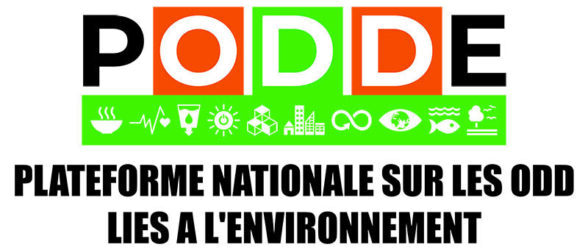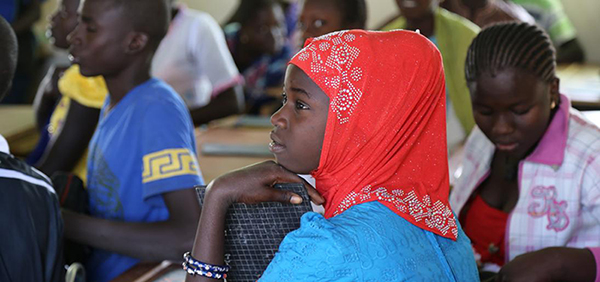This article aims to highlight the challenges of collecting qualitative, disaggregated data. It does so by using the case study of monitoring child-related indicators in Senegal
A fundamental tenet of the 2030 Agenda for Sustainable Development, and the Sustainable Development Goals (SDGs), is to leave no one behind. This principle is clearly stated in the preamble of UN resolution 70/1 of September 2015. It is also embodied in SDG 10, which calls for “the social, economic and political inclusion of all regardless of age, sex, disability, race, ethnicity, origin, religion, economic status or other.” To make sure no one is left behind, disaggregated and quality statistical data is imperative. Aggregated data is the compilation of many data into one (summaries of data). It often hides the disparities that exist between groups. For example, schooling of children in a given region versus schooling of girls and boys. By contrast, disaggregated data emphasizes the specificities of different groups, allowing policies and interventions to better target vulnerable populations.
In this spirit, in collaboration with UNICEF, Initiative Prospective Agricole et Rurale (IPAR) conducted a study focused on four regions in Senegal considered to be home to the most vulnerable children : Sedhiou, Kolda, Tambacounda, and Kedougou. IPAR researchers identified which SDGs are likely to have a direct and/or an indirect impact on children, as well as 50 corresponding monitoring indicators. The study aimed to highlight these indicators’ level of disaggregation. The exercise concerned the regional, departmental, and municipal level.
The researchers faced the following challenges while collecting this data :
Data availability & quality
At the regional level, 30-42 percent of the 50 indicators were not reported on. There were also variations by region on the level of information available per indicator. At the departmental level, less than 30 percent of the indicators are reported on. At the municipal level, information on indicators was unlikely to be found.
According to the United Nations classification, there are three levels distinguishing indicator quality :
- Level I stands for indicators for which there is a data collection methodology and available data ;
- Level II means methodology is available but no data ;
- Level III means that there is no methodology to collect data and there is no existing data.
From the indicators that are reported on, 48 percent are level I, 40 percent are level II, and 12 percent are level III. This shows that there is a serious issue with quality data.
In fact, local authorities, for the most part, have difficulty in obtaining reliable statistics. This is due to the lack of appropriate tools or human resources to collect them. At the district level, there is a weakness or a virtual absence of statistics. When these statistics exist, they are sourced from national-level surveys or censuses, with no input from regional stakeholders.
Data lack granularity
Analysis showed weak disaggregation of child-specific indicators according to place of residence, age, and sex. When considering the place of residence, more than 90 percent of the indicators are not disaggregated. Similarly, only up to 27 percent of targeted indicators are broken down in terms of age distribution. The situation is even more worrying with the sex variable. Less than 11 perecnt of the SDG indicators are disaggregated by sex.
Data accessibility
At the regional level, many highlighted difficulties in accessing data. There is very little data sharing between different actors (regional public services, local authorities, research institutions, and NGOs). Information sharing is subject to authorizations and hierarchical barriers. This stands in contradiction with the desire to make information as transparent as possible.
Data integration
There is no institution or policy addressing data produced outside the national statistical system, for example by NGOs, civil society organizations (CSOs), or the private sector. However, non-state actors collect an immense amount of data, especially at the local level, and often base their interventions and activities on these statistics. Although this data is available and used locally, it is rarely integrated at the national level. Thus, available data is sometimes locked in a system that does not allow its accessibility and sharing on a national level.
Recommendations
The data disaggregation challenges described above will make it difficult to reach populations who are most likely to be most vulnerable.
In another study assessing the capacity for SDG monitoring in Senegal, IPAR proposed, among other recommendations, to :
- improve the National Statistical System (NSS),
- strengthen infrastructure and equipment for data collection, production, and the dissemination of statistical data and
- harmonize the statistical production systems at the local level to bring them up to standard.
This new data ecosystem model involves all stakeholders (official data producers, data users, and technical and financial partners), both local and national.
Incorporating new actors (NGOs, CSOs, and the private sector) into the data production ecosystem will be a complicated task. Many otherwise siloed stakeholders will be challenged to harmonize approaches and methods, and the NSS should seek to define standards for the collection and analysis of data. There are also institutional accountability challenges and uncertainties regarding human resources quality assessment in non-state organizations.
Nonetheless, several stakeholders are utilizing good information-sharing practices that have potential for optimization and scale. For example, in Kedougou, Senegal, a committee, chaired by the governor and composed of several public structures (planning, statistics, and social action) and World Vision, regularly monitor child protection indicators. Through this partnership, 26 districts and 326 villages are successfully monitored.
If the information-sharing practices in places like Kedougou are replicated and enhanced on a national scale, it would be possible to have disaggregated data at different levels. This data would facilitate informed and rapid decision-making, in order to especially benefit the most vulnerable layers of society, thus ensuring no one is left behind.
About the authors :
Cheikh Faye is statistician at IPAR.
Aminata Diop Kane is knowledge management officer at IPAR.
Southern Voice is a network of 50 think tanks from Asia, Africa, and Latin America researching the UN Sustainable Development Goals.
Source : www.data4sdgs.org



Comments are closed, but trackbacks and pingbacks are open.